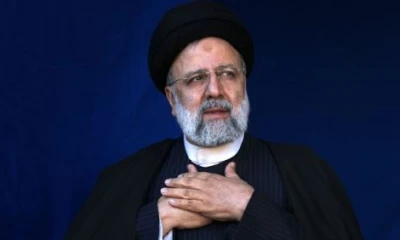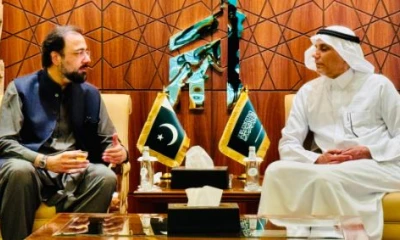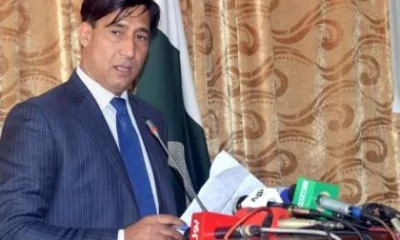World
Iranian President Ebrahim Raisi confirmed dead in helicopter crash: officials
The charred wreckage of the helicopter which crashed on Sunday carrying Raisi and FM Hossein Amirabdollahian was found early on Monday

(Reuters/ AFP): Iranian President Ebrahim Raisi, a hardliner long seen as a potential successor to Supreme Leader Ayatollah Ali Khamenei, was killed in a helicopter crash in mountainous terrain near the Azerbaijan border, officials and state media said on Monday.
The charred wreckage of the helicopter which crashed on Sunday carrying Raisi and Foreign Minister Hossein Amirabdollahian was found early on Monday after an overnight search in blizzard conditions.
“President Raisi, the foreign minister and all the passengers in the helicopter were killed in the crash,” a senior Iranian official told Reuters, asking not to be named because of the sensitivity of the matter.
Raisi’s death was later confirmed in a statement on social media by Vice President Mohsen Mansouri and on state television.
An Iranian official earlier told Reuters the helicopter carrying Raisi and Foreign Minister Hossein Amirabdollahian was completely burned in the crash on Sunday.
Raisi had been at the Azerbaijani border on Sunday to inaugurate the Qiz-Qalasi Dam, a joint project. Azerbaijan’s President Ilham Aliyev, who said he had bid a “friendly farewell” to Raisi earlier in the day, also offered assistance in the rescue.
Rescue teams fought blizzards and difficult terrain through the night to reach the wreckage in East Azerbaijan province in the early hours of Monday.
A total of nine people were on board the aircraft, according to Tasnim news agency. Raisi’s convoy had included three helicopters, and the other two had “reached their destination safely”, said the news agency.
State TV reported that images from the site showed the aircraft slammed into a mountain peak, although there was no official word on the cause of the crash.
Iran’s Red Crescent chief Pirhossein Koolivand said rescue teams headed towards the site of the crash after locating the aircraft.

“The helicopter has been found. Now, we are moving toward the helicopter,” said Koolivand. “We are seeing the helicopter. The situation is not good.”
“Upon finding the helicopter, there was no sign of the helicopter passengers being alive as of yet,” state TV reported about 15 hours after the aircraft went missing.
Iranian media including Fars news agency shared drone images of what appeared to be the wreckage of the helicopter.
State TV first reported Sunday afternoon that “an accident happened to the helicopter carrying the president” in the Jolfa region of East Azerbaijan province. Interior Minister Ahmad Vahidi said the helicopter “made a hard landing” in bad weather.
Raisi, 63, was elected president in 2021, and since taking office has ordered a tightening of morality laws, overseen a bloody crackdown on anti-government protests and pushed hard in nuclear talks with world powers.
Iranian Supreme Leader Ayatollah Ali Khamenei, who holds ultimate power with a final say on foreign policy and Iran’s nuclear programme, sought to reassure Iranians, saying there would be no disruption to state affairs.
The Iranian government will continue to operate “without the slightest disruption” following Raisi’s death, said a cabinet statement on Monday.
“We assure the loyal nation that the path of service will continue with the tireless spirit of Ayatollah Raisi,” said the statement, stressing that the government’s work will continue “without the slightest disruption”.
Condolences pour in for ‘great friend’
President Asif Ali Zardari “expressed profound shock and sorrow over the tragic death” of his Iranian counterpart. In a statement issued by the president’s office, Zardari “emphasised that the Islamic World has lost a remarkable leader who always supported [the] Muslim cause and deeply felt the sufferings of the Muslims globally, particularly the Palestinian and Kashmiri people”.
“Today, Pakistan mourns the loss of a great friend. Just last month, we had the honour of hosting him in Pakistan. During our discussions, I found him very keen on strengthening our bilateral relations,” President Zardari said, recalling Raisi’s visit to Pakistan last month.
Highlighting that the Iranian president “always had a special place for Pakistan and its people”, Zardari said Raisi will be “dearly missed and fondly remembered in Iran, Pakistan, and the Islamic World for his efforts to enhance relations with regional and Islamic countries”.
Prime Minister Shehbaz Sharif, extending his deepest condolences and sympathies to the Iranian nation, said Pakistan would observe a day of mourning and the flag would fly at half-mast.
“Had been anxiously following developments regarding the reported crash landing of President Raisi’s helicopter. Was hoping for good news. Alas, this was not to be,” the premier said in a post on X.
“The great Iranian nation will overcome this tragedy with customary courage,” he added. In another post, PM Shehbaz recalled Raisi’s “historic visit” to the country: “They were good friends of Pakistan.”
Interior Minister Mohsin Naqvi also expressed his condolences, adding that his recent meeting with the Iranian president was a memorable one. Indian Prime Minister Narendra Modi said he was “deeply saddened and shocked by the tragic demise” of Raisi.
“His contribution to strengthening India-Iran bilateral relationship will always be remembered. My heartfelt condolences to his family and the people of Iran. India stands with Iran in this time of sorrow,” he said in a post on X.
Rescuers participate in what the Iranian Red Crescent Society says is a search and rescue operation following the crash of a helicopter carrying Iranian President Ebrahim Raisi, at an unidentified location in this still image taken from video released on May 20. — Iranian Red Crescent Society via Reuters
Expressions of concern and offers of help came from abroad, including Iraq, Kuwait, Qatar, Saudi Arabia, Syria, Russia, China and Turkiye, as well as from the European Union which activated its rapid response mapping service to aid in the search effort.
Iran’s cabinet held an emergency meeting led by Vice President Mohammad Mokhber after the incident, the IRNA news agency reported.
Army, Revolutionary Guard and police officers were involved in the search, authorities said, as TV stations showed pictures of Red Crescent teams walking up a hill in the mist, while rows of emergency response vehicles waited.
A Turkish drone identified a source of heat suspected to be the helicopter’s wreckage and had shared the coordinates of the possible crash site with Iranian authorities, Anadolu news agency said earlier on X.0
IRNA said Raisi was flying in a US-made Bell 212 helicopter. Earlier, the national broadcaster had stopped all regular programming to show prayers being held for Raisi across the country.
In the early hours of Monday, it showed a rescue team, wearing bright jackets and head torches, huddled around a GPS device as they searched a pitch-black mountainside on foot in a blizzard.
We are thoroughly searching every inch of the general area of the crash,“ state media quoted a regional army commander as saying. “The area has very cold, rainy, and foggy weather conditions. The rain is gradually turning into snow.”
A US State Department spokesman said: “We are closely following reports of a possible hard landing of a helicopter in Iran carrying the Iranian president and foreign minister”, adding that “we have no further comment at this time”.
US President Joe Biden has been briefed on the crash, an American official said on condition of anonymity. China said it was deeply concerned. The European Union offered emergency satellite mapping technology.
Hardliner, possible successor to Khamenei
Rescue vehicles are seen following a crash of a helicopter carrying Iran’s President Ebrahim Raisi, in Varzaqan, East Azerbaijan Province, Iran on May 19, 2024. — Wana via Reuters
The crash comes at a time of growing dissent within Iran over an array of political, social and economic crises. Iran’s clerical rulers face international pressure over Tehran’s disputed nuclear programme and its deepening military ties with Russia during the war in Ukraine.
Since Iran’s ally Hamas attacked Israel on Oct 7, provoking Israel’s assault on Gaza, conflagrations involving Iran-aligned groups have erupted throughout the Middle East.
In Iran’s dual political system, split between the clerical establishment and the government, it is Raisi’s 85-year-old mentor Khamenei, supreme leader since 1989, who holds decision-making power on all major policies.
For years many have seen Raisi as a strong contender to succeed Khamenei, who has endorsed Raisi’s main policies. Raisi’s victory in a closely managed election in 2021 brought all branches of power under the control of hardliners, after eight years when the presidency had been held by pragmatist Hassan Rouhani and a nuclear deal negotiated with powers including Washington.\
However, Raisi’s standing may have been dented by widespread protests against clerical rule and a failure to turn around Iran’s economy, hamstrung by Western sanctions.
Regional
Why can’t prices just stay the same?
If high inflation hurts just about everyone, why can’t we have no inflation?
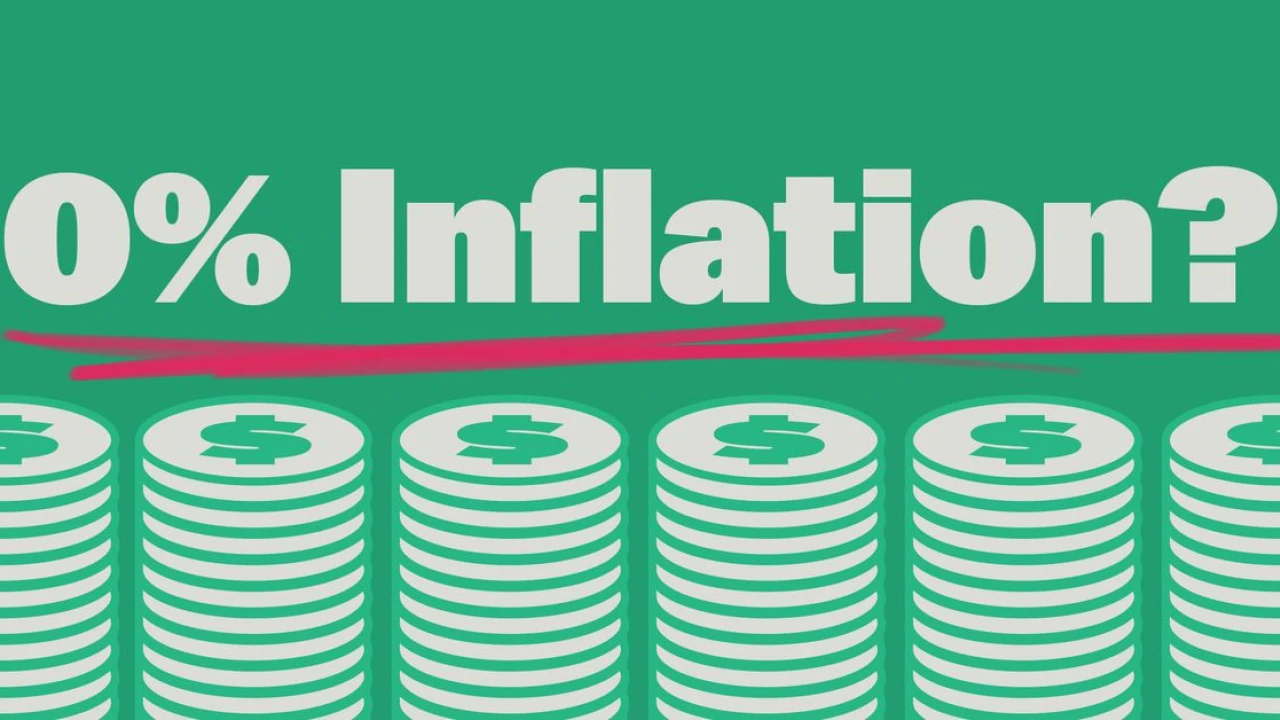
Over the past few years, most of the world has experienced some pretty intense inflation, with prices rising as much as 10 percent in a single year. In 2024, even though inflation rates have fallen to more manageable levels, prices are still way up and are very unlikely to come down. Which, understandably, continues to be a source of major stress for people all over the world. So why can’t prices just stay the same?
As a consumer, steady prices and zero inflation seems like the ideal: You want your purchasing power to stay the same and for your dollar today to buy you exactly the same amount as your dollar tomorrow. But even in times of global economic health and stability, governments and their central banks actively avoid letting inflation get too low. That’s because 0 percent inflation might actually end up doing more harm than good.
You can find the video above and the entire library of Vox’s videos on YouTube.
This video is presented by DCU. DCU has no editorial influence on our videos, but their support makes videos like these possible.
Regional
The Supreme Court decides not to trigger a second Great Depression
Even Clarence Thomas thought a lower court decision that could have triggered a second Great Depression went too far.
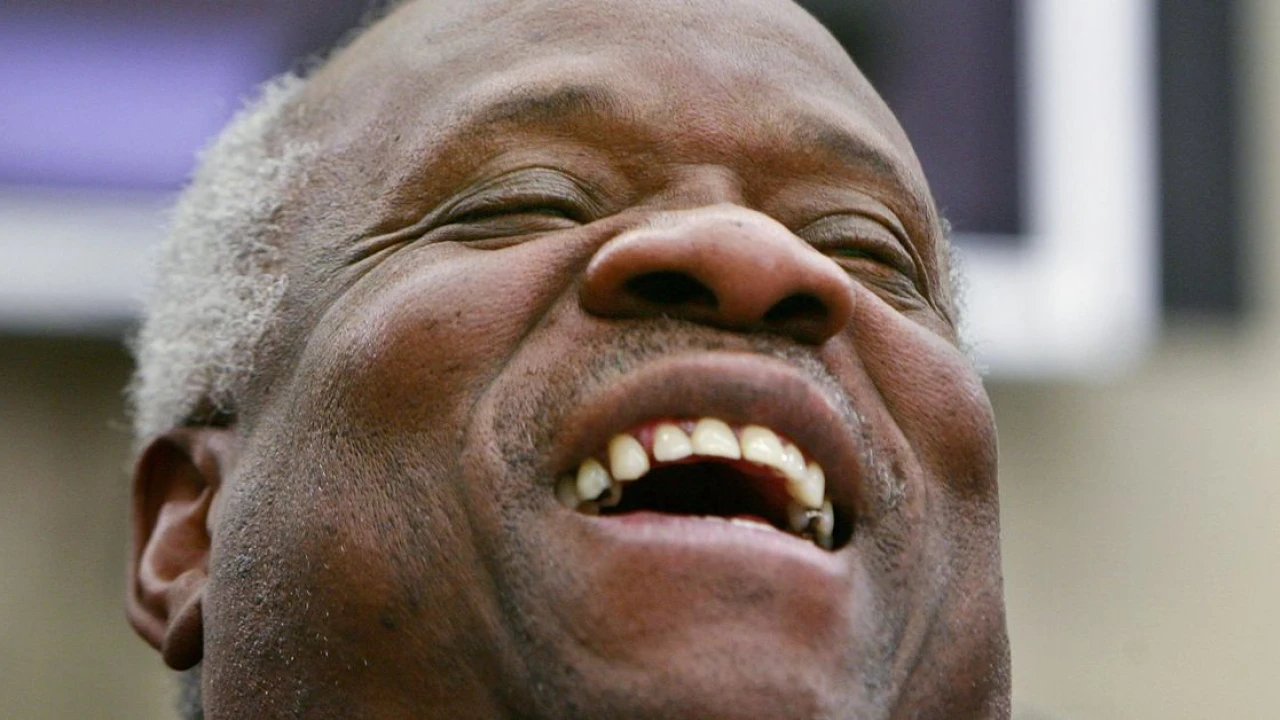
The Supreme Court delivered a firm and unambiguous rebuke to some of America’s most reckless judges on Thursday, ruling those judges were wrong to declare an entire federal agency unconstitutional in a decision that threatened to trigger a second Great Depression.
In a sensible world, no judge would have taken the plaintiffs arguments in CFPB v. Community Financial Services Association seriously. Briefly, they claimed that the Constitution limits Congress’s ability to enact “perpetual funding,” meaning that the legislation funding a particular federal program does not sunset after a certain period of time.
The implications of this entirely made-up theory of the Constitution are breathtaking. As Justice Elena Kagan points out in a concurring opinion in the CFPB case, “spending that does not require periodic appropriations (whether annual or longer) accounted for nearly two-thirds of the federal budget” — and that includes popular programs like Social Security, Medicare, and Medicaid.
Nevertheless, a panel of three Trump judges on the United States Court of Appeals for the Fifth Circuit — a court dominated by reactionaries who often hand down decisions that offend even the current, very conservative Supreme Court — bought the CFPB plaintiffs’ novel theory and used it to declare the entire Consumer Financial Protection Bureau unconstitutional.
In fairness, the Fifth Circuit’s decision would not have invalidated Social Security or Medicare, but that’s because the Fifth Circuit made up some novel limits to contain its unprecedented interpretation of the Constitution. And the Fifth Circuit’s attack on the CFPB still would have had catastrophic consequences for the global economy had it actually been affirmed by the justices.
That’s because the CFPB doesn’t just regulate the banking industry. It also instructs banks on how they can comply with federal lending laws without risking legal sanction — establishing “safe harbor” practices that allow banks to avoid liability so long as they comply with them.
As a brief filed by the banking industry explains, without these safe harbors, the industry would not know how to lawfully issue loans — and if banks don’t know how to issue loans, the mortgage market could dry up overnight. Moreover, because home building, home sales, and other industries that depend on the mortgage market make up about 17 percent of the US economy, a decision invalidating the CFPB could trigger economic devastation unheard of since the Great Depression.
Thankfully, that won’t happen. Seven justices joined a majority opinion in CFPB which rejects the Fifth Circuit’s attack on the United States economy, and restates the longstanding rule governing congressional appropriations. Congress may enact any law funding a federal institution or program, so long as that law “authorizes expenditures from a specified source of public money for designated purposes.”
The law funding the CFPB clears this very low bar and is therefore constitutional.
Notably, the Supreme Court’s CFPB decision was authored by Justice Clarence Thomas, who is ordinarily the Court’s most conservative member. The fact that even Thomas delivered such an unambiguous rebuke to the Fifth Circuit is a sign of just how far the lower court went off the rails in its decision.
Two justices did dissent: Justice Samuel Alito, the Court’s most reliable GOP partisan, and Justice Neil Gorsuch, who also dissented in a similar case that could have triggered an economic depression if Gorsuch’s view had prevailed. Alito’s dissenting opinion is difficult to parse, but it largely argues that the CFPB is unconstitutional because Congress used an unusual mechanism to fund it.
Among other things, the CFPB’s funds first pass through a different federal agency, the Federal Reserve, before it lands in the CFPB’s banking account.
But, as seven justices correctly conclude, the fact that CFPB’s funding mechanism is unusual does not make it unconstitutional, and judges are not supposed to simply make up new constitutional restrictions on Congress because they think that Congress acted in a way that is novel or unwise.
-
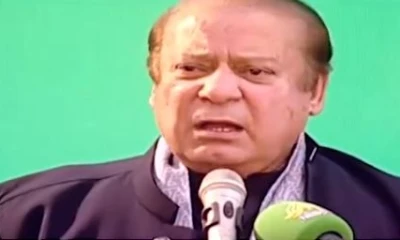
 Pakistan 1 day ago
Pakistan 1 day agoIn PML-N huddle, Nawaz Sharif deplores past 'injustices'
-

 Pakistan 1 day ago
Pakistan 1 day agoShehbaz nominated acting president of PML-N
-
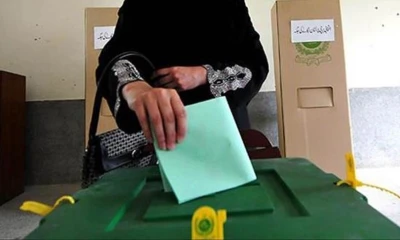
 Pakistan 1 day ago
Pakistan 1 day agoPolling for NA-148 Multan-1 by-election today
-
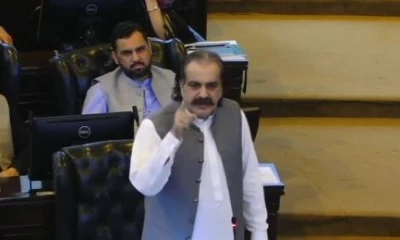
 Pakistan 2 days ago
Pakistan 2 days agoGandapur gives centre 15-day ultimatum to resolve outstanding dues, loadshedding
-
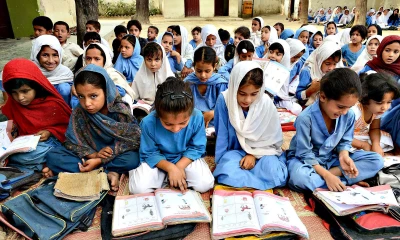
 Pakistan 12 hours ago
Pakistan 12 hours agoYet another education emergency!
-
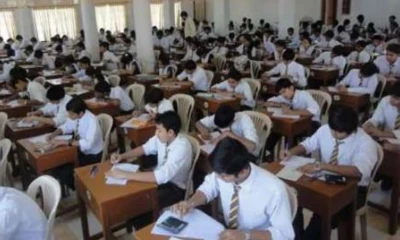
 Regional 16 hours ago
Regional 16 hours agoIntermediate exams postponed in Sindh due to heatwave alert
-

 Business 1 day ago
Business 1 day agoPrices of gold go extremely high today
-

 Pakistan 1 day ago
Pakistan 1 day agoPresident summons Senate session on May 21









